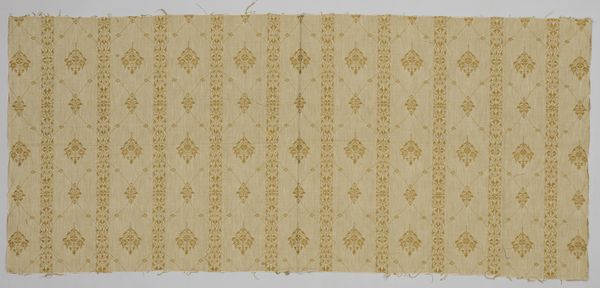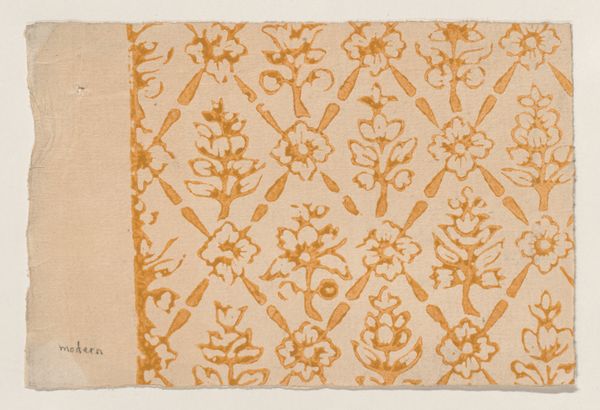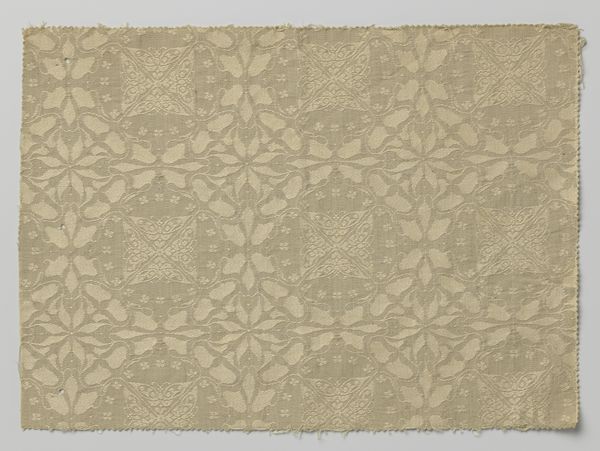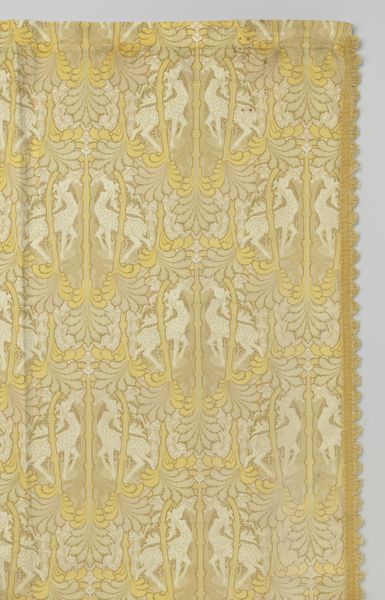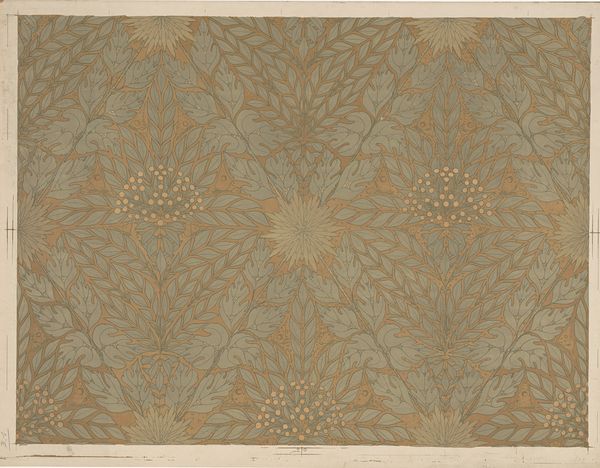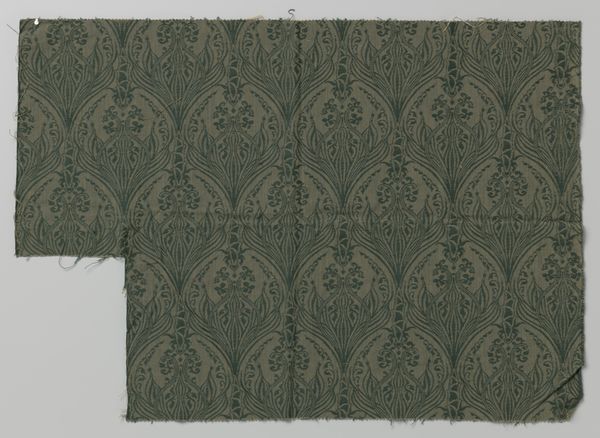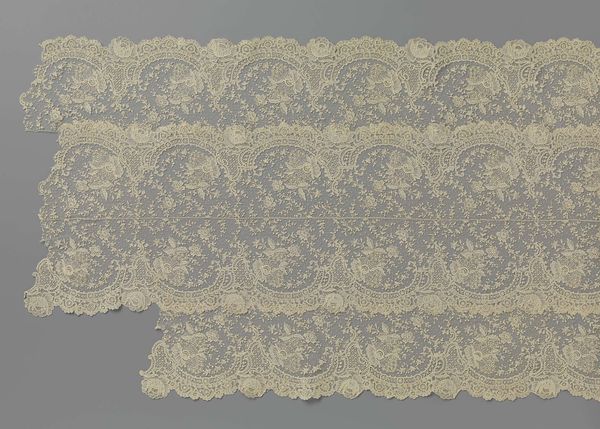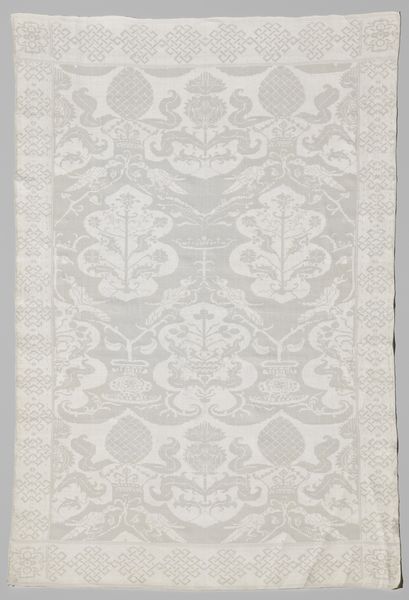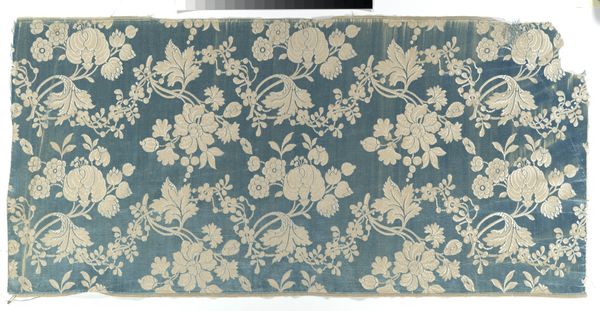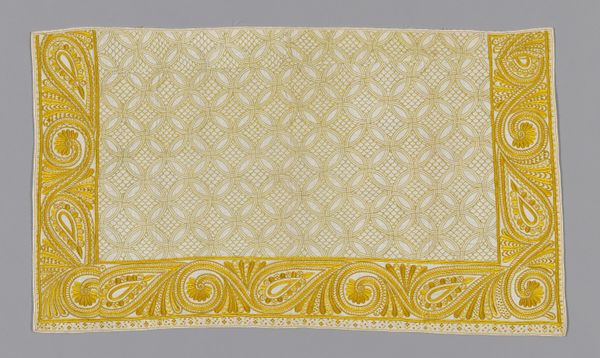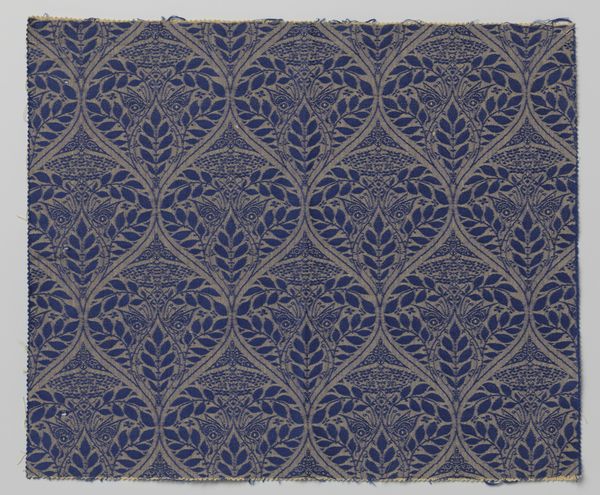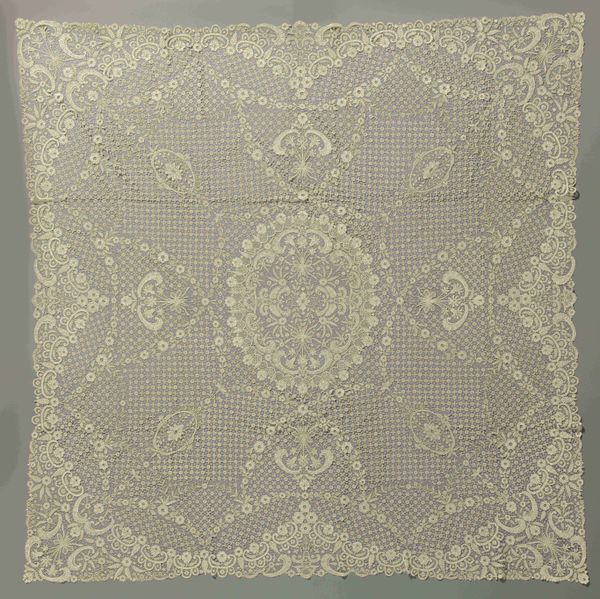
Fragment bespanningsstof met patroon van druivenranken tussen verticale strepen. Gele inslag op naturelkleurige ketting 1900 - 1925
0:00
0:00
theonieuwenhuis
Rijksmuseum
textile
#
natural stone pattern
#
organic
#
art-nouveau
#
textile
#
geometric pattern
#
repetitive shape and pattern
#
organic pattern
#
repetition of pattern
#
vertical pattern
#
pattern repetition
#
textile design
#
decorative-art
#
imprinted textile
#
layered pattern
Dimensions: length 39.5 cm, width 28.0 cm
Copyright: Rijks Museum: Open Domain
Curator: We're looking at a textile fragment, titled "Fragment bespanningsstof met patroon van druivenranken tussen verticale strepen. Gele inslag op naturelkleurige ketting," dating from somewhere between 1900 and 1925. The piece currently resides in the Rijksmuseum collection and is attributed to Theo Nieuwenhuis. Editor: My initial impression is one of gentle rhythm. The ochre vines flowing amidst those pale vertical stripes create a field that's somehow both soothing and energetic. It's also decidedly flat. Curator: Rhythm is definitely a key component here, wouldn't you say? This fragment is representative of the Art Nouveau and Pattern and Decoration movements. Notice the repetition, but also the slight variations within the pattern itself. Nieuwenhuis skillfully uses organic motifs within a more rigid geometric structure. These dualities characterize turn-of-the-century decorative art and design. Editor: I agree; the rigidity offers stability to all the curvilinear grape vines and flower clusters. And the overall subdued palette makes me wonder about the socio-economic context. Who commissioned this fabric? Where might it have been used? I am curious how such stylized depictions of the natural world might intersect with, say, the rise of industrial production and textile manufacturing. Curator: Certainly, one could ask whether the increasing industrialization influenced the Art Nouveau’s stylized romanticism with the natural world, perhaps providing a nostalgic foil to mass production. Consider as well the rising middle class and how these kinds of decorative textiles factored into interior design choices that signalled status. Editor: It makes me wonder how Nieuwenhuis positioned himself amidst these shifts. Was he designing for the elite, a burgeoning middle class, or with some utopian ideal for how art and design could impact daily life? His name also intrigues me – "New House"—perhaps reflective of a desire for forward-thinking designs in the domestic sphere. Curator: Intriguing considerations, indeed. The weaving technique itself adds another layer; one can consider the warp and weft as structural underpinnings—or perhaps metaphorically representing time or fate itself. This work rewards careful looking, to be sure. Editor: Absolutely. Examining this textile inspires one to ponder larger histories interwoven within. Curator: It reveals how patterns – both in art and in history – speak to deeper structural, political and cultural currents.
Comments
No comments
Be the first to comment and join the conversation on the ultimate creative platform.
